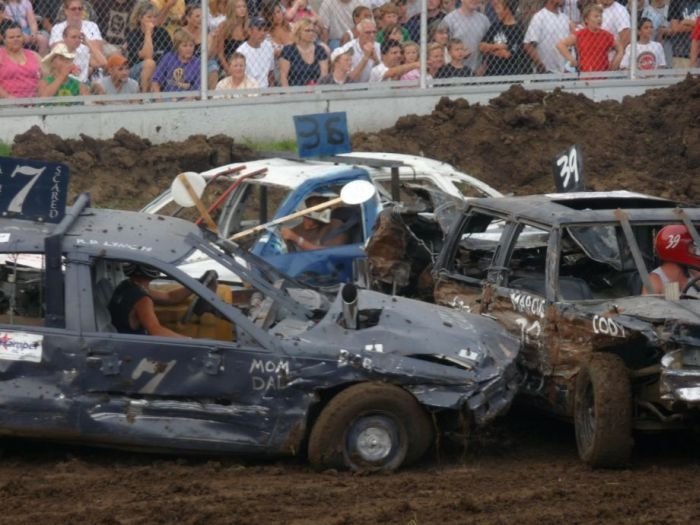|
|
Demolition Derby
|
Demolition derbies can be very dangerous. Although serious injuries are rare, occasionally they do happen. Drivers are typically required to sign a waiver to release the promoter of an event from liability. To make the event safer, all glass is removed from the vehicle, and deliberately ramming the driver's-side door area is forbidden. The driver's door is often required to be painted white with black numbers or blaze orange, or with contrasting colors, for visibility. Most demolition derbies are held on dirt tracks, or in open fields, that are usually soaked with water. This causes the competition area to become muddy, which in turn helps to further slow the vehicles. Some drivers use both the front and rear of the vehicle to ram the other competitors. Others tend to use only the rear end of the vehicle, to help protect the engine compartment from damage.
History
Demolition derbies were first held at various fairs and race tracks by independent promoters in the 1950s. There are unconfirmed reports of events occurring as far back as the 1930s utilizing the abundant supply of worn out Ford Model T's. The originator of the concept for demolition derbies is disputed. One source said that Don Basile is often credited with inventing the demolition derby at Carrell Speedway in 1947. Another source states stock car racer Larry Mendelsohn created the concept for demolition derbies at New York State's Islip Speedway in 1958 after realizing many people favored wrecks to racing.
|
|









